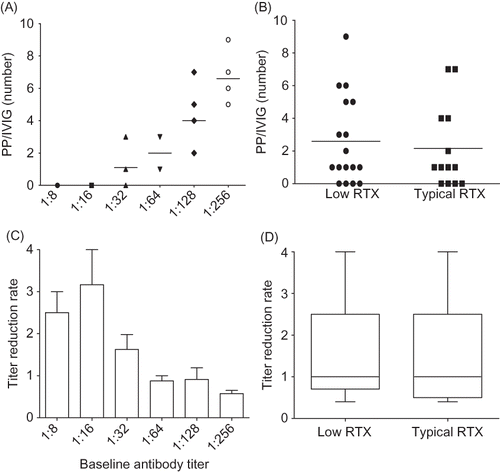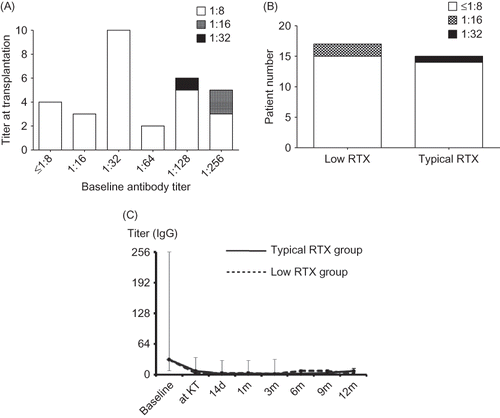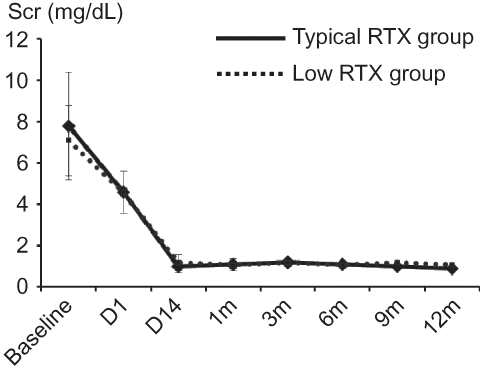Figures & data
Table 1. Baseline characteristics of the patient populations.
Table 2. Comparison of acute rejection and infectious complication.
Figure 1. (A) Change of CD19, (B) CD20 positive cell counts, and (C) antibody titer before and after RTX infusion. In low RTX group (left) and typical RTX group (right), CD19+/CD20+ cell counts were successfully depleted to <1%. Antibody titer showed decreasing pattern after the infusion of RTX. RTX, rituximab.

Figure 2. (A) The minimally required number of PP/IVIG according to baseline anti-ABO antibody titer. Note that the PP/IVIG number significantly increased with the increase of baseline titer (r2 = 0.78, p < 0.01). (B) The minimally required number of PP/IVIG did not differ between low RTX and typical RTX groups. (C) TRR according to baseline antibody titer. It showed significantly decreasing pattern with the increase of baseline antibody titer (r2 = 0.23, p < 0.01). (D) TRR did not differ between low RTX and typical RTX groups. PP/IVIG, plasmapheresis/intravenous immunoglobulin; RTX, rituximab; TRR, titer reduction rate.

Figure 3. (A) The titer at transplantation according to baseline anti-ABO antibody titer. In patients with baseline titer equal or less than 1:1256, most patients took KT at titer of less than 1:16. (B) The distribution of target titer did not differ significantly between low RTX and typical RTX group. (C) In comparison of the change of anti-ABO antibody (IgG) titer, it was suppressed well in both low RTX and typical RTX groups up to 1 year after KT. KT, kidney transplantation; RTX, rituximab.

